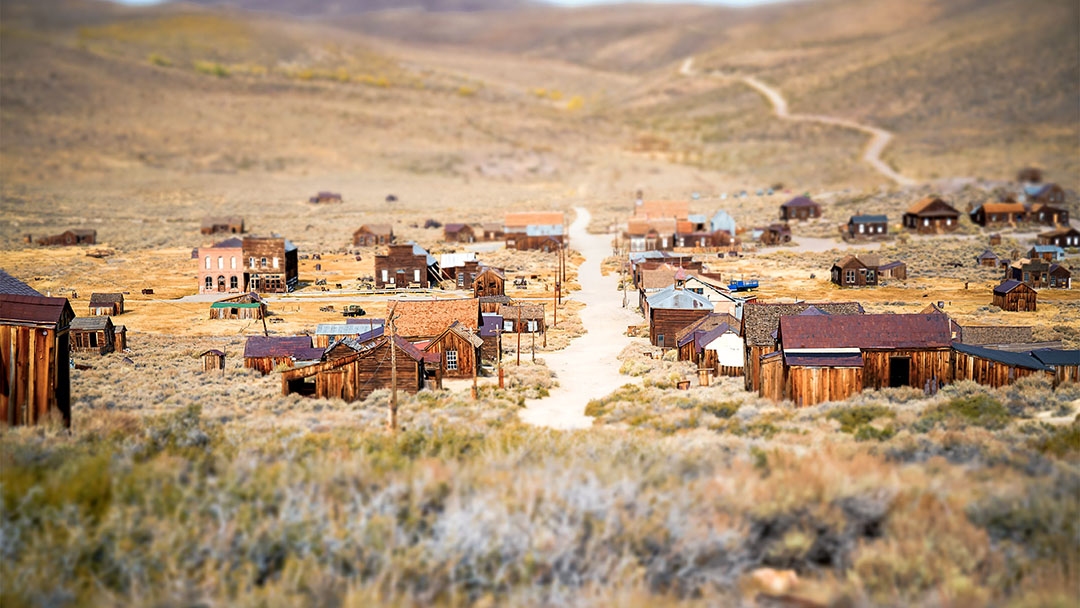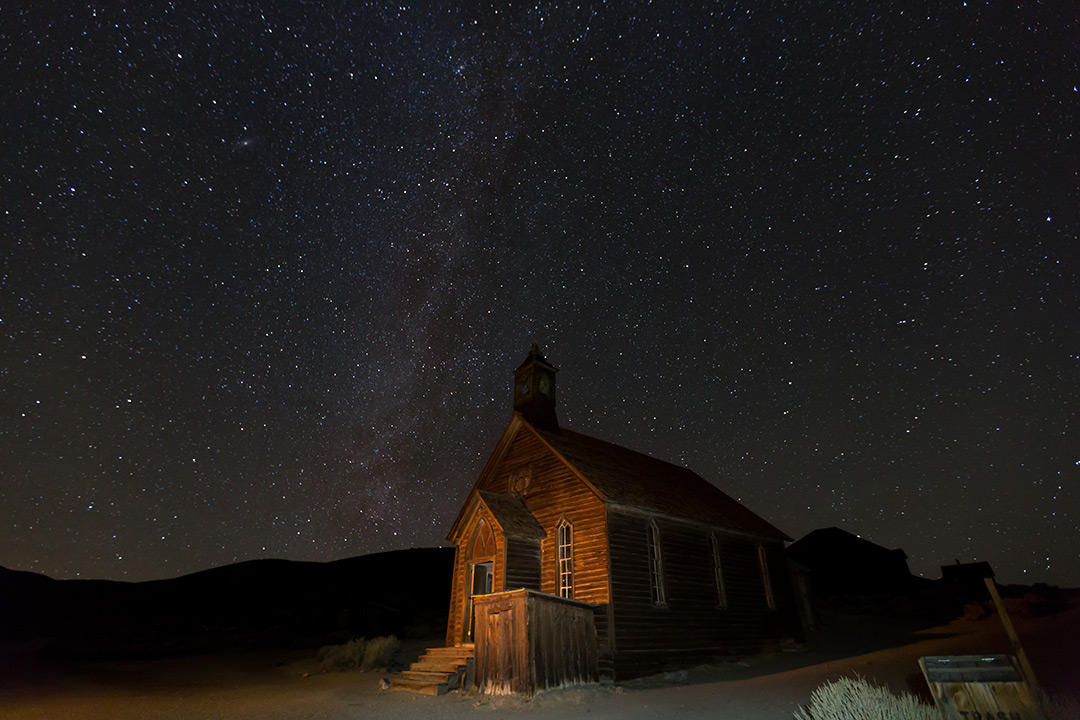Bodie State Historic Park
The Park is currently OPEN.
Highway 270 is now open! This is your best route into Bodie!
The turn off for Hwy 270 is located off of Hwy 395 south of Bridgeport and north of Mono Lake.
CAUTION!
All other roads to Bodie are 4-wheel drive, high-clearance dirt roads. Every year, many vehicles, including 4-wheel drive, get stuck trying to get to Bodie on these roads.
Towing services for these dirt roads can be costly!
Many mapping services, such as Google maps and GPS may still show Hwy 270 as closed and are routing people up Bridgeport Canyon/Coyote Springs and Cottonwood Canyon Road, both north of Mono Lake.DO NOT FOLLOW THESE DIRECTIONS!
About Bodie State Historic Park

Bodie State Historic Park is a genuine California gold-mining ghost town. Visitors can walk down the deserted streets of a town that once had around 2,000 structures and a population of roughly 8,000 people.
The town is named for W.S. Body (or Bodey), who had discovered small amounts of gold in hills north of Mono Lake. In 1875, a mine cave-in revealed a rich vein of ore, which led to purchase of the mine by the Standard Company in 1877. People flocked to Bodie and transformed it from a town of a few dozen to a boomtown. In 1881, Bodie's "bust" began and the town's population declined drastically. The town's population continuing to decline until only a few remained. Mining officially ceased in Bodie in 1942, the final nail in the coffin for Bodie's township. Two large fires in 1892 and 1932 reduced the town's remaining structures down to less than 10% of the 2,000 structures that once stood.
Only a small part of the town survives. Interiors remain as they were left and stocked with goods. Designated as a National Historic Site and a State Historic Park in 1962, the remains of Bodie are being preserved in a state of "arrested decay." Today this once thriving mining camp is visited by tourists who continue to travel to Bodie from all over the world, just as they did back in Bodie's boom years.
Know Before You Go
Bodie is a ghost town. Today it looks much the same as it did over 50 years ago when the last residents left. To preserve the ghost town atmosphere, there are no commercial facilities at Bodie, such as food or gasoline. There is a bookstore inside the museum where you may also inquire about daily tours. Please read the following to prepare for your trip to Bodie.
Dogs
Dogs are permitted in the park but must be on a leash at all times. Please clean up after your pet. Dogs are not allowed on the Stamp Mill tour or in the Museum.
Drones
In the interest of public safety and the preservation of resources, Bodie SHP is closed to unmanned aircraft systems (UAS), also known as “drones,” “quad-copters” and similar. (California Code of Regulations, Title 14, Section 4326 A)
Closed Areas
For public protection, certain unstable sections of the park are posted as prohibited areas, and are closed to entry by park visitors.
Camping
There is no camping at Bodie. Contact U.S. Forest Service or Bureau of Land Management offices for nearby camping information.
Restrooms (flush toilets) are located at the parking lot and the picnic area. Three "modern" outhouses exist in the park for visitor use as well. These are located across the street from the parking lot (just across from the northern entrance to the parking lot). Two more outhouses are located in the center of town, on the far left corner of the intersections of Main and Green Street when approaching on Green Street from the parking lot.
Souvenirs and Collecting
Everything in Bodie is part of the historic scene and is fully protected. NOTHING may be collected or removed from the park (this includes natural features such as rocks and plants in addition to historic items.). Metal detectors are not allowed.
Winter Visits
Bodie is open all year. However, because of the high elevation (8375 feet), it is accessible only by skis, snowshoes or snowmobiles during winter months. Snowmobiles must stay on designated roads in the Bodie Hills.
Winter weather is often unpredictable. Sub-zero temperatures, strong winds and white-out conditions are common. Many four wheel drive vehicles with chains get stuck each year in powdery snow. In spring, mud can be a problem. Local towing services, when available, can be costly. Check road conditions before traveling. Choose to travel only when safe.
Help Save Bodie!
Don’t be the reason Bodie Disappears
The taking of any natural or historical features from the park is not allowed… in fact it's illegal. State and National parks have laws in place to help protect places of natural, cultural, and historical significance in order to preserve these places for all to enjoy. Without these regulations, these places would be at risk of being stripped of the resources that make them special.
As a California State Park, the natural, cultural or historic resources here in Bodie are protected by State law. This means that it is illegal to remove or disturb natural features such as rocks, vegetation, or wildlife here in the park, just as it is illegal to remove or vandalize any of the historic features or artifacts here (broken glass, nails, etc.)
Bodie is special in that many buildings and artifacts were protected from theft and vandalism well into the 20th century leaving us what we have today.
Other nearby mining camps and towns such Aurora and Masonic have very little left due to the amount of theft and vandalism that occurred after these places were abandoned and are an example of what would have been Bodie’s fate had caretakers not ensured this place would be protected for future generations even before it became a California State Park.
When artifacts are removed from the park, a part of Bodie’s story disappears and is stolen from every other person who would have seen that item in the future.
When items are taken and later sent back to the park, it is often difficult to prove the item came from Bodie and the item may never truly be returned to Bodie or the location it came from. Processing these returned artifacts is also time-consuming for staff and takes away from other work that needs to be done.
It is important for visitors to remember that Bodie is a giant outdoor museum. It would be impossible to put every artifact outside inside a museum and it would also take away from the experience of walking around and seeing what is here. Not to mention, the museum is only open for part of the year.
We also ask that you don’t pick up items and move them around the park. Please leave everything where you see it. Take pictures and leave behind what is here to continue to tell Bodie’s story well into the future.






